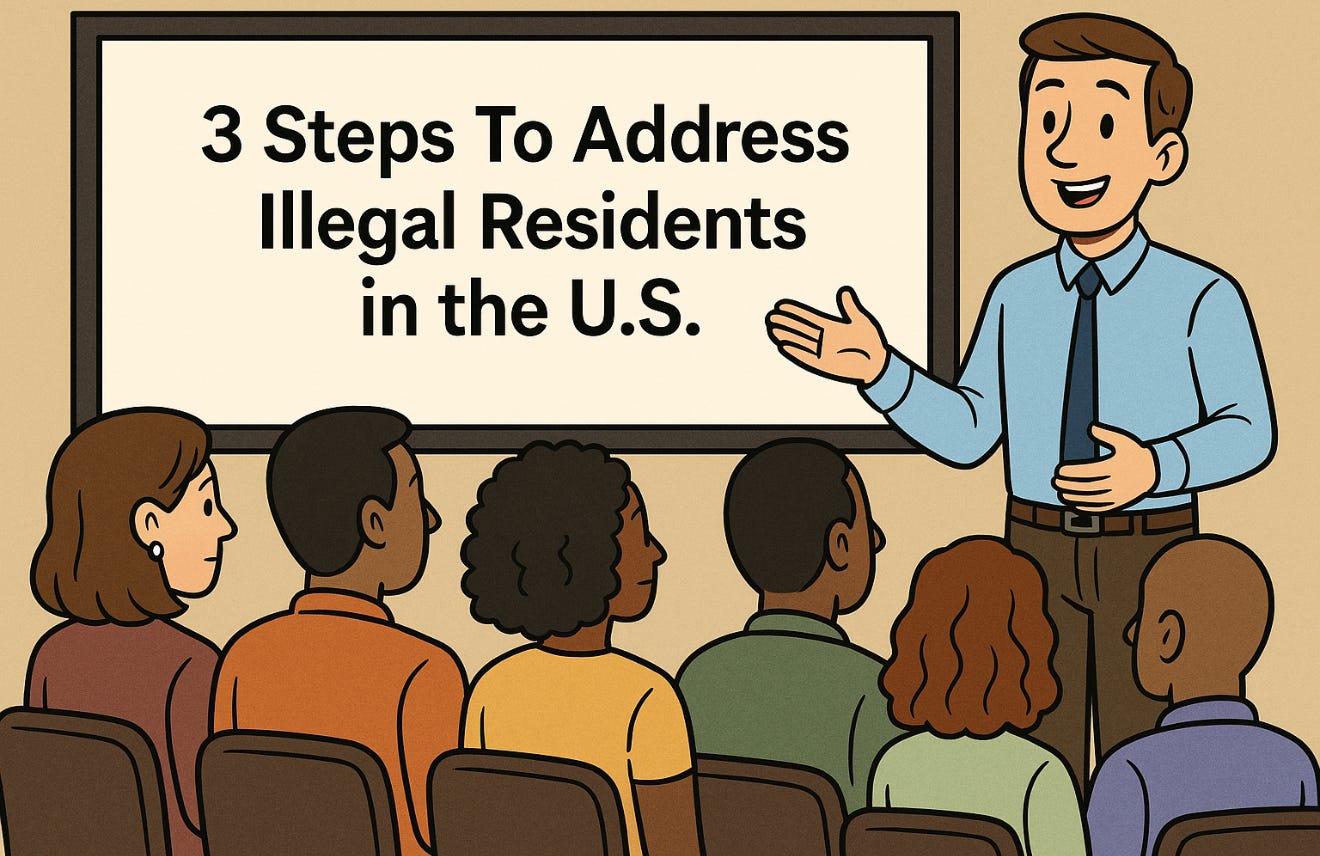3 Steps To Address Illegal Residents in the United States (Hint: Take away their taxpayer funded services)
Border crossings are near zero, but millions of illegal immigrants remain, straining public resources. Frankly with little incentive to go back to their home countries.
Border Secured, Now Fix the Real Issue
Backed by robust security funding, recent enforcement measures have slashed illegal border crossings to historic lows. That’s progress, but the 11 million illegal immigrants already here, who broke the law to enter, remain a challenge. Mass deportation faces huge logistical and financial hurdles, though targeted enforcement has merit. Three strategic moves—one new law, repealing an old one, and overturning a flawed Supreme Court ruling—can make staying less appealing, encouraging voluntary exits while honoring taxpayers and legal immigrants waiting in line.
New Law: Mandate E-Verify
I’m a free-market guy, but employers hiring illegal immigrants undermine the law and fair labor. E-Verify, a free system, verifies work eligibility in minutes with 99% accuracy, per the U.S. Chamber of Commerce. Arizona’s E-Verify mandate cut unauthorized jobs by 15%. A national requirement, with $10,000 fines per violation for knowingly hiring unlawful residents, would dry up jobs. This isn’t big government; it’s holding businesses accountable for following the law. No work, no reason for illegal immigrants to stay.
Repeal an Old Law: End EMTALA’s Free Care
The 1986 Emergency Medical Treatment and Active Labor Act (EMTALA) forces Medicare-funded hospitals to provide emergency care to illegal immigrants, costing taxpayers $1.5 billion yearly, per the Center for Immigration Studies. This burdens budgets and incentivizes unlawful stays. Repeal it or amend it: Treat life-threatening cases, then report to immigration authorities for deportation post-recovery. States like California can fund their own care, but federal dollars shouldn’t subsidize lawbreaking. This respects taxpayers and legal immigrants, who’d pay taxes, too, if given their chance.
Overturn a Bad Precedent: Revisit Plyler v. Doe
The Supreme Court’s 1982 Plyler v. Doe ruling, a 5-4 decision, mandates free K-12 education for children of illegal immigrants, costing $23 billion annually for 1.7 million students, per a 2019 Congressional Budget Office estimate. This benefit draws families who enter illegally, seeking education for their kids. The Court should reverse this, letting states decide. California might keep funding education, but others could opt out, reducing the pull. Illegal immigrants pay some taxes—hard to quantify—but that’s not the point. Legal immigrants stuck in backlogs abroad would also contribute if allowed fairly.
Put Legal Immigration First
Free perks—jobs, healthcare, education—make leaving illogical for illegal immigrants. Why go when you get benefits meant for legal residents? Sure, they pay some taxes, but so would millions of legal applicants—8 million in visa backlogs, per the State Department—waiting years in their home countries, blocked by line-jumpers. California’s Medi-Cal expansion for illegal immigrants deepens this unfairness. Mandating E-Verify, repealing EMTALA’s mandate, and overturning Plyler would show that lawbreaking has costs. Legal immigration, which fuels our economy and culture, thrives when rules are enforced. Let’s clear the path for those who respect the process and protect public funds.



